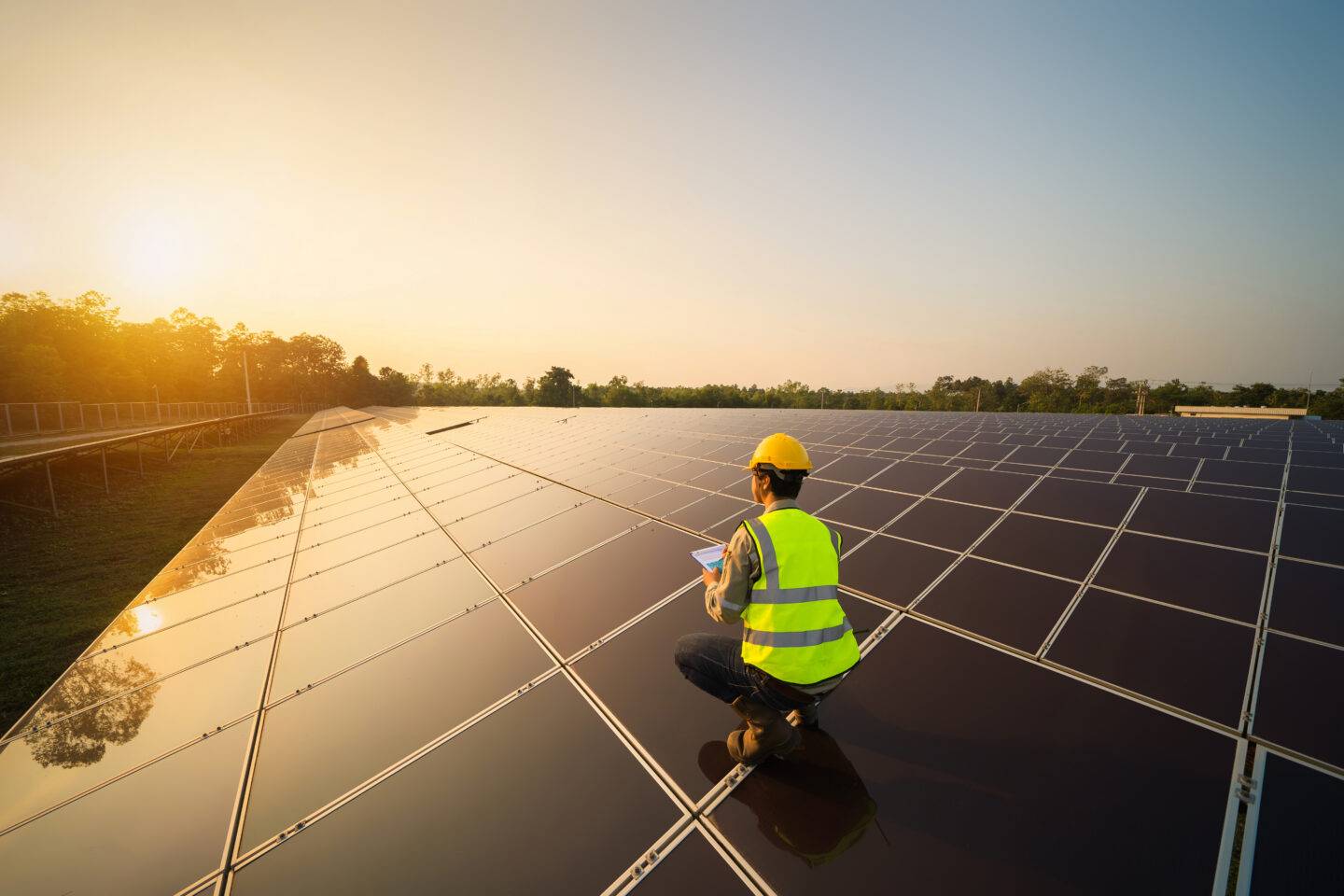Monthly market report – June ’24
Find out the top five factors that have the potential to impact energy prices over the next 12 months.

To quote the advice we gave our clients back in November 2023, “It goes without saying that the best-case scenario for the UK is that we have a mild winter. If this happens then prices are likely to remain weak.”
Fast forward to today and wholesale energy prices have decreased a further 22%, because of said mild winter period. But while gas storage stocks in Western Europe remain high for the time of year, many of the risks to energy prices remain, and we need to be careful not to be led into a false sense of security.
Below are what we believe to be the top five factors that will affect energy prices over the next 12 months.
Geopolitics
Two global geo-political events continue to dominate the energy agenda.
One – Conflict in the Middle East – in the past few months the situation has escalated further with the involvement of Iran. Although there seems to be little impact on global oil and gas supplies at the moment, it might not take much for tensions to increase further, which in turn could quickly impact global oil and gas supplies. We are also closely monitoring the situation in the Red Sea, as any further issues in one of the busiest shipping lanes in the world could have a significant impact on oil and gas shipments, thereby affecting energy prices.
Two – The Russian invasion of Ukraine – the Russian attacks have started to damage critical energy infrastructure in Ukraine and it feels like the conflict is beginning to step up another gear. Small amounts of pipeline gas from Russia, via Ukraine, are flowing and there is still significant supply of Russian Liquefied Natural Gas (LNG) into North West Europe (mainly into Belgium). By last year, Russian LNG made up 5 per cent of the EU’s gas consumption. On the pipeline front, a deal between Ukraine and Russia to allow for this transit, which accounts for about 5 per cent of the EU supplies, expires at the end of this year. Ukraine has expressed its intention to not renew the deal. On the LNG front, the EU Commission has expressed its intention to ban EU countries from re-exporting Russian LNG after receiving it, as part of a new sanctions deal. This isn’t the same as banning the import of Russian LNG to Europe, but this is one to watch very carefully. The gas supply/demand balance in Europe remains sensitive right now, so any reduction in supply is likely to lead to higher prices.
Gas supply
Since the Russian invasion of Ukraine, Europe has had to find replacement gas to make up for the lack of gas flowing from Russia. For the most part, this has been a success with a significant increase in LNG from the US and Norway. However, even small shocks in the supply from the US can have a significant impact on price. Only in the last 2 months one of the main exporters from the US, Freeport LNG, suffered some infrastructure issues at the loading port which decreased supply for a few weeks and pushed gas prices higher in Europe. Because the gas supply/demand balance is tighter than it has ever been in the past, any small change in supply will now have a greater impact on price.
Energy demand
Due to the high prices seen in 2022, gas and power demand decreased significantly around the world. Gas and power demand in Europe remains about 20% below 2021 levels, even though wholesale prices have fallen about 80% from their highs. This is not just the result of higher prices but also reduced economic activity. There is a lot of speculation about interest rate decreases by central banks around the globe. We have seen the ECB cut interest rates in Europe. Once interest rates are cut further we could see economic recovery being stimulated and quite possibly some of that reduced demand return to market. If this happens, it will likely keep a floor on prices.
Gas storage in Western Europe
After a mild winter, gas storage inventories are very high for the time of year. Levels currently sit at about 74% – way above the normal average. Although this sits at a similar level to this time last year, there is greater certainty that storage levels will be at a healthy level by the start of winter. This high gas inventory has probably kept a lid on wholesale gas and electricity prices in the recent uptrend.
Weather
As we mentioned at the start, weather has a significant influence on energy prices globally. The previous winter was mild which subdued prices, but a warmer than normal summer can sometimes increase prices due to greater need for air conditioning, lower water levels (curtailing nuclear electricity output) and lower wind levels, reducing wind electricity generation. Of course, it won’t be too long until we get the longer range forecast for this winter’s weather!
Ultimately, it’s a case of being prepared. We had recently been advising our fixed price clients to renew for the October renewal, then potentially waiting until autumn or winter for the April 2025 renewal. For the October renewals, this is now a difficult call as prices have risen since our recommendation to buy. There may be better opportunities to buy much later in the summer, however if energy costs look favourable to budgets or business plans, then don’t look a gift horse in the mouth!
As far as advice to flex customers, you need to ensure that your hedge levels are at an appropriate level to mitigate against further price increases. Opportunities will present themselves, but you need to make sure that you can react swiftly to sudden price moves by having suitable delegated authorities in place.
Article written by Alastair Hutson, Risk and Trading Director
